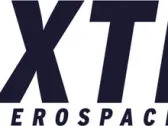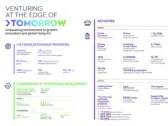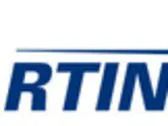Day Return
YTD Return
1-Year Return
3-Year Return
5-Year Return
Note: Sector performance is calculated based on the previous closing price of all sector constituents
Industries in This Sector
Select an Industry for a Visual Breakdown
| Industry | Market Weight | YTD Return | |
|---|---|---|---|
| All Industries | 100.00% | 5.11% | |
| Aerospace & Defense | 19.37% | 26.55% | |
| Specialty Industrial Machinery | 14.81% | -10.93% | |
| Railroads | 8.29% | -3.45% | |
| Farm & Heavy Construction Machinery | 6.82% | -0.60% | |
| Building Products & Equipment | 6.38% | 13.31% | |
| Specialty Business Services | 5.42% | 9.18% | |
| Integrated Freight & Logistics | 4.51% | -10.84% | |
| Waste Management | 4.23% | 12.92% | |
| Conglomerates | 4.02% | -3.85% | |
| Engineering & Construction | 3.85% | 20.78% | |
| Industrial Distribution | 3.79% | 0.76% | |
| Staffing & Employment Services | 3.27% | -0.63% | |
| Rental & Leasing Services | 2.32% | -0.65% | |
| Consulting Services | 2.15% | 4.05% | |
| Electrical Equipment & Parts | 2.14% | 23.73% | |
| Trucking | 1.81% | -8.79% | |
| Airlines | 1.77% | 7.84% | |
| Tools & Accessories | 1.21% | -9.76% | |
| Marine Shipping | 0.80% | 59.61% | |
| Security & Protection Services | 0.79% | 5.32% | |
| Pollution & Treatment Controls | 0.77% | 16.33% | |
| Infrastructure Operations | 0.62% | 736.72% | |
| Metal Fabrication | 0.60% | 14.25% | |
| Airports & Air Services | 0.16% | -30.76% | |
| Business Equipment & Supplies | 0.10% | 4.39% | |
Note: Percentage % data on heatmap indicates Day Return
All Industries
--
<= -3
-2
-1
0
1
2
>= 3
Largest Companies in This Sector
|
Name
|
Last Price
|
1Y Target Est.
|
Market Weight
|
Market Cap
|
Day Change %
|
YTD Return
|
Avg. Analyst Rating
|
|---|---|---|---|---|---|---|---|
| 162.21 | 184.65 | 3.56% |
|
|
|
Buy
|
|
| 330.90 | 336.49 | 3.24% |
|
|
|
Hold
|
|
| 108.14 | 104.23 | 2.88% |
|
|
|
Hold
|
|
| 228.39 | 267.82 | 2.79% |
|
|
|
Buy
|
|
| 207.72 | 219.32 | 2.71% |
|
|
|
Buy
|
|
| 322.06 | 333.41 | 2.58% |
|
|
|
Buy
|
|
| 136.51 | 160.93 | 2.34% |
|
|
|
Buy
|
|
| 187.15 | 202.96 | 2.30% |
|
|
|
Buy
|
|
| 466.82 | 489.10 | 2.24% |
|
|
|
Hold
|
|
| 370.32 | 425.94 | 2.04% |
|
|
|
Buy
|
Investing in the Industrials Sector
Start Investing in the Industrials Sector Through These ETFs and Mutual Funds
ETF Opportunities
|
Name
|
Last Price
|
Net Assets
|
Expense Ratio
|
YTD Return
|
|---|---|---|---|---|
| 122.36 | 17.856B | 0.09% |
|
|
| 37.66 | 7.176B | 0.47% |
|
|
| 136.79 | 6.101B | 0.40% |
|
|
| 236.62 | 5.507B | 0.10% |
|
|
| 104.48 | 3.116B | 0.58% |
|
Mutual Fund Opportunities
|
Name
|
Last Price
|
Net Assets
|
Expense Ratio
|
YTD Return
|
|---|---|---|---|---|
| 120.81 | 5.507B | 0.10% |
|
|
| 17.92 | 1.593B | 0.68% |
|
|
| 37.95 | 572.417M | 0.69% |
|
|
| 104.75 | 571.808M | 0.70% |
|
|
| 48.57 | 538.102M | 0.76% |
|
Industrials Research
Discover the Latest Analyst and Technical Research for This Sector
-
Daily Spotlight: Asset Allocation Model Slightly Favors Bonds
Our stock/bond asset-allocation model, which we call the Stock Bond Barometer, is indicating that bonds are the asset class offering the most value at the current market juncture. But not by much. Our model takes into account levels and forecasts of short-term and long-term government and corporate fixed-income yields, inflation, stock prices, GDP, and corporate earnings, among other factors. The output is expressed in terms of standard deviations to the mean, or sigma. The mean reading from the model, going back to 1960, is a modest premium for stocks of 0.16 sigma, with a standard deviation of 0.97. In other words, stocks normally sell for a premium valuation. The current valuation level is a 0.34 sigma premium for stocks, just above the historical average but within the normal range. Other measures also show reasonable multiples for stocks. The forward P/E ratio for the S&P 500 is 19, within the normal range of 13-24. The current S&P 500 dividend yield of 1.3% is below the historical average of 2.9%, but also 29% of the 10-year Treasury bond yield, compared to the long-run average of 39% and the all-time low of 18%. Further, the gap between the S&P 500 earnings yield and the benchmark 10-year government bond yield is about 340 basis points, compared to the historical average of 400 and nosebleed valuation levels of 200 basis points. We expect results from our stock-bond valuation model to favor stocks, as interest rates head lower and EPS growth picks up. Based in part on the output from our Stock Bond Barometer, our recommended asset-allocation for moderate accounts is 70% growth assets and 30% fixed income.
-
Technical Assessment: Bullish in the Intermediate-Term
After massive advances, it's looking more and more like the uptrend in metals is finally failing. We thought the rally might be over back in mid-April after a parabolic move and then a massive price reversal on huge volume. Gold (GLD), silver (SLV), and copper (CPER) all pulled back into early May but then made one advance to all-time highs for GLD and CPER and new recovery highs for SLV. Those new price peaks for GLD were minor and followed a big move higher, similar to what we recently saw in the stock market. These patterns of one last minor high after big rallies are bearish more often than not. In addition, the new highs were not confirmed by daily momentum and created nasty bearish divergences.
-
Daily – Vickers Top Buyers & Sellers for 06/05/2024
The Vickers Top Buyers & Sellers is a daily report that identifies the five companies the largest insider purchase transactions based on the dollar value of the transactions as well as the five companies the largest insider sales transactions based on the dollar value of the transactions.
-
Daily – Vickers Top Insider Picks for 06/05/2024
The Vickers Top Insider Picks is a daily report that utilizes a proprietary algorithm to identify 25 companies with compelling insider purchase histories based on transactions over the past three months.


















